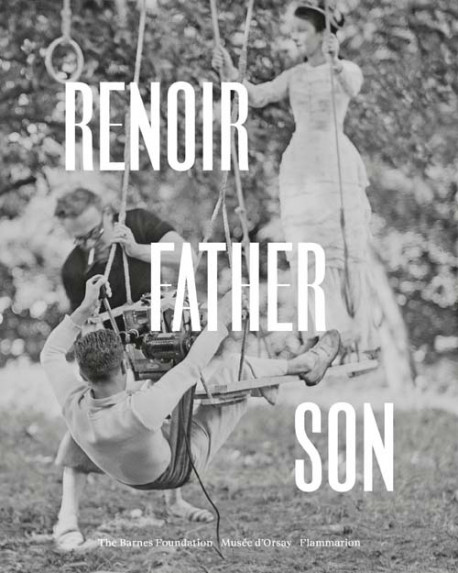Aucun produit
Produit ajouté au panier avec succès
Il y a 0 produits dans votre panier. Il y a 1 produit dans votre panier.
Afin d'optimiser votre expérience de navigation, ce site utilise des cookies. En navigant sur ce site, vous en acceptez l'usage.

Editions Bilingues & inter.
- Nouveautés
- Catalogue d'exposition
- Sélection Fêtes
- Prix réduits
- Idées Cadeaux
- Editions Bilingues & inter.
- Livres d'art pour enfants
- Histoire de l'Art
- Peinture
- Architecture
- Sculpture
- Dessin Gravure
- Photographie
- Art contemporain
- Arts Décoratifs Design
- Techniques des Arts
- Critique
- Beaux livres
- Civilisations
- Revues partenaires
Renoir, father and son. Painting and Cinema
The exhibition seeks to explore the fruitful and at times paradoxical dialogue between a father, Pierre-Auguste Renoir, and a son, Jean Renoir, between two artists, and between painting and cinema.
| Référence | 9782080203809 |
| Artiste-Genre | Pierre-Auguste Renoir, Jean Renoir |
| Auteur(s) | Sylvie Patry |
| Editeur(s) | Flammarion |
| Format | Hardcover |
| Nb. de pages | 312 |
| Langue | English |
| Dimensions | 7.9 x 1.2 x 9.7 inches |
| Date parution | 2019 |
> Exhibition catalogue Renoir, father and son. Painting and Cinema, presented at the Musée d'Orsay, Paris (6 november 2018 - 27 jan. 2019).
The Impressionist paintings of Pierre-Auguste Renoir are characterized by portraits and lively episodes from daily life. These joyful scenes influenced the life and work of his son, filmmaker Jean Renoir, who Orson Welles described as “the greatest of all directors.”
This catalogue—and the traveling exhibition it accompanies—demonstrates how Pierre-Auguste Renoir’s artistic practice and creative universe influenced Jean’s art, and how Jean’s films shed new light on his father’s paintings. Focusing on leitmotifs in both artists’ works, this volume commingles paintings, drawings, films, costumes, photographs, and ceramics. Contributions from the Barnes Foundation, the Musée d’Orsay, and the Cinémathèque Française provide in-depth insight.
At Jean’s birth in 1894, Pierre-Auguste Renoir – who is 53 years old – accesses the recognition as a master of French art. Jean's childhood is spent in art.
Jean Renoir is 25 when his father dies in 1919. From 15 to 25 years old, Jean trains himself to ceramics, commercializing pieces with tawny colors which artisanal character embodies his father’s teaching since in the beginning, Renoir father used to paint on china and is a staunch defender of decorative arts.
If the young man could have devoted himself to ceramics his whole life, he gets passionate about cinema when he marries Andrée Heuschling, “of a unique beauty”. Jean wants to make her a movie star and has a movie made in her honor by Albert Dieudonné. In 1924, Jean Renoir shots his first movie, Catherine and discover his call, cinema. The movie isn’t great, but Jean is “inhabited by staging”.
Despite his failures, Jean Renoir pursues a career with Boudu Saved from Drowning or The Rules of the Game. With Grand Illusion in 1937, he accesses an international fame and leaves for Los Angeles. In 1959, he shots Picnic on the Grass in Cagnes, South France, in his parents’ house.
Through paintings, movie abstracts, photographs, costumes, posters, drawings and documents – some of them never seen before – this multidisciplinary exhibition will explore the themes commons to these two artists, father and son…
Produits déjà vus







